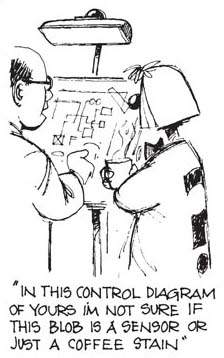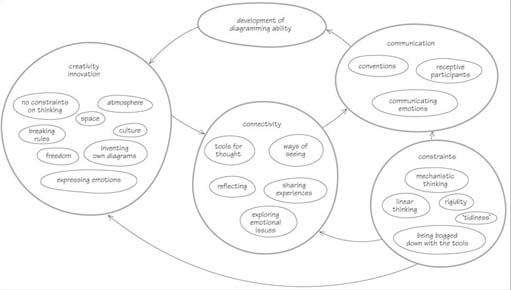4.1 Systems diagrams and diagrams helpful for systems work
Diagrams are used extensively in systems thinking and practice. All of those types included in the animated tutorial [Tip: hold Ctrl and click a link to open it in a new tab. (Hide tip)] , as well as other types not covered there, can or have been used in systems studies. As mentioned at the beginning of the course the use of diagrams is very personal. For instance I find it helpful to group diagrams into three sorts depending on when they are to be used:
-
when you have not yet identified a system of interest within a complex situation and you are just trying to make sense of it;
-
when you are representing a system of interest and so use a diagram with an explicit or implicit boundary included on it; and
-
when you are analysing the structure or processes within particular aspects of your chosen system of interest. These are the groupings I have used in the animated tutorial.

Fisher and Hudson (1997), on the other hand, have developed a way of looking at the use of diagrams and have identified three major phases – creativity, connectivity and communication. They suggest that skill in using diagrams comes from using all three phases in a diagramming cycle (Figure 11). What follows is an explanation of their views, which means you may have to look at the descriptions of the diagram types in the animated tutorial to understand them fully.

In order to allow maximum flexibility and creativity in the creativity phase, there are no rules for using diagrams, though Checkland (1981), for example, has suggested some minimum desirable elements such as structure and process in rich pictures. Normally, such diagrams are private to the author and only use whatever conventions are sufficient to allow the author to recover the ideas in the diagram at a later stage.
The purpose of the connectivity phase is to enable the author to make whatever connections are helpful for understanding a situation or planning to change a situation. During this phase it is still possible to use a private language, but it is likely that the author will begin to use conventions, which might readily be understood by others.
The purpose of the communication phase is to develop diagrams that enable the author's ideas to be shared with and/or communicated to others. Diagrams developed in the communication phase need to be structured and to use recognisable conventions. However, the use of such conventions is likely to inhibit creativity and, in order to understand and analyse the responses which the author receives to their work in this phase, they must return to the creativity phase.
